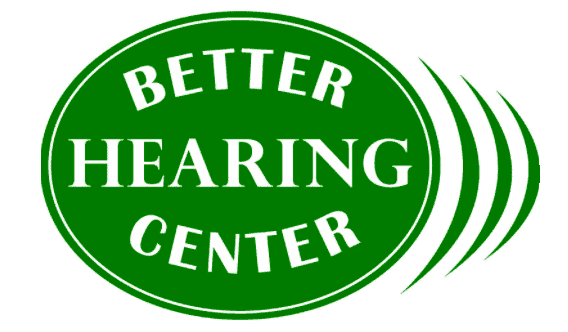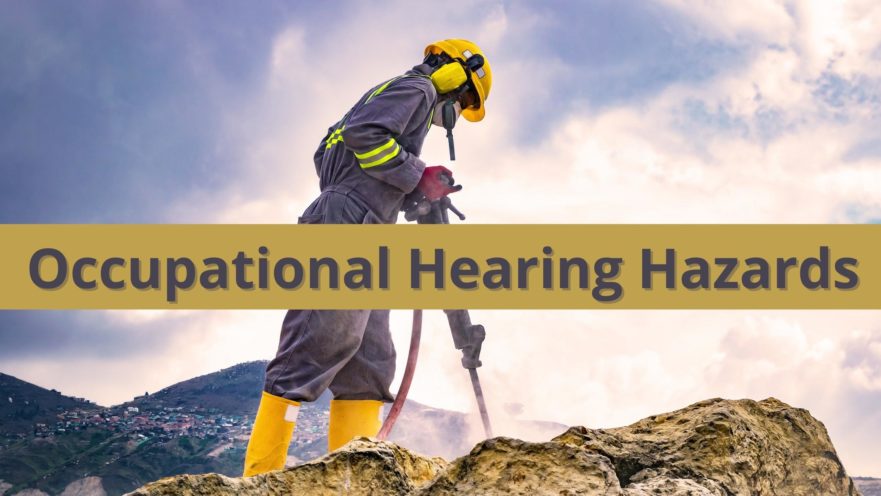- The Harm of Smoking to the Ears - April 9, 2025
- The Importance of Exercise for Hearing Health - March 11, 2025
- Movie Theaters and Hearing Aids - February 13, 2025
According to the Centers for Disease Control and Prevention, 24% of all cases of hearing loss are caused by occupational hearing hazards. Hearing loss is one of the most common medical conditions that people live with today, impacting nearly 48 million people. If you work in a nosier setting, it is important to practice safety measures that protect your hearing health.
What are Occupational Hearing Hazards?
Occupational hearing hazards describe risks that people are exposed to in the workplace that are potentially harmful to hearing health. The two most common types of occupational hearing hazards are:
- Loud noise: exposure to loud noise is a major cause of hearing loss. Sound above 85 decibels is potentially hazardous for hearing. Many types of work environments involve noise that exceeds this: music venues, construction sites, airports, bars, etc. The CDC estimates that nearly 30 million people are exposed to hazardous levels of noise at work.
- Ototoxic chemicals: these are chemicals that include carbon monoxide, metals, solvents, etc. that can damage the auditory system.
Navigating occupational hearing hazards increases the risk of developing hearing loss. Loud noise is the more common type of occupational hearing hazard, one that often leads to noise-induced hearing loss.
Understanding Noise-Induced Hearing Loss
One of the most common causes of hearing loss is exposure to loud noise. One time or constantly absorbing loud noise can damage critical parts of the auditory system – the sensory system, involving the ears and brain, that absorbs and understands sound. Sound is measured in decibels (dB) and 85dB is considered hazardous for hearing health. This is the equivalent of busy city traffic or a hair dryer. People can be easily exposed to noise that exceeds 85dB in the workplace, contributing to hearing loss.
According to experts, people can take in noise at 85dB for 8 hours a day without threat to hearing health. But for sound that exceeds this volume, exposure time needs to be reduced to protect hearing health. The American Speech-Language-Hearing Association’s guidelines for safe listening recommends reducing exposure time by half for every 3-decibel increase (after 85dB):
- 85dB: 8 hours
- 88dB: 4 hours
- 91dB: 2 hours
- 94dB: 30min
Exceeding these safety parameters can permanently impair hearing. Loud noise can damage the hair cells in the inner ear. There are thousands of hair cells in the cochlea which help convert incoming sound waves into electrical signals. These signals are then carried to the brain (via auditory nerves) where they are processed and assigned meaning to. This process enables us to understand the speech and sound we hear. Loud noise can cause hair cells to lose sensitivity, reducing their capacity to perform their essential function. Because hair cells in the inner ear (unlike other types of cells we have) do not regenerate, the damage they sustain is permanent; causing noise-induced hearing loss.
Identifying Hearing Loss Symptoms
It is important to be aware of the signs of hearing loss so you can intervene as soon as you notice any changes to your hearing health. Common symptoms include:
- Tinnitus: a buzzing, ringing, clicking like noise in one or both ears
- Sounds are slurred , distorted, muffled, etc.
- Increasing the volume on electronic devices like the television
- Frequently asking others to repeat something they’ve said, speak louder, and or slower
- Difficulty hearing in environments with background noise
- Experiencing challenges following a conversation, identifying individual words, hearing complete sentences
- Lip reading, pretending to hear, cupping one ear
Depending on the degree of hearing impairment, these symptoms can be experienced mildly to profoundly. It is important to intervene early if you recognize any of these symptoms by seeking hearing loss treatment.
Tips to Protect Hearing Health
Practicing safety measures to protect hearing health is a critical way to reduce the risk of developing hearing loss. This is especially important if you work in an environment that is nosier. Tips to start practicing include:
- Wear hearing protection. This can include earmuffs, headphones, or earbuds which protect the ears. Hearing protection reduces the amount of loud noise you absorb.
- Monitor volume. Be sure to measure the volume of noise in your workplace. Knowing the volume allows you to determine safe exposure time and adjust accordingly. You can measure sound in an environment by downloading an app that measures decibels.
- Access accommodations. Employers are required to create safe working conditions and provide accommodations to ensure safety. Be sure to access any resources for hearing protection.
In addition to these tips, be sure to have your hearing assessed regularly. Call us to learn more and to schedule an appointment for a hearing test!

